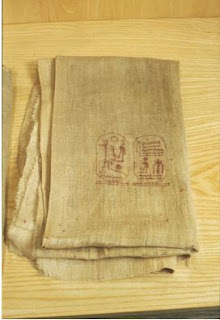2323–2150 B.C.
Dimensions
Overall: 43 x 74 cm (16 15/16 x 29 1/8 in.) Center front (and shoulders): 76.2 x 83.8 x 3.2 cm (30 x 33 x 1 1/4 in.)
Accession Number
34.56
Medium or Technique
Linen
Representations of women from the Old Kingdom almost always depict them in tight-fitting, plain, sheath dresses with skirts held in place by shoulder straps. The long sleeves, formless shape, and over-
all pleating of this perfectly preserved linen dress demonstrate that actual garments could be decidedly different. Perspiration stains and creases leave little doubt that the unnamed woman from Naga
el-Deir in whose tomb it was found wore it during her lifetime. Her coffin also contained what may have been the rest of her wardrobe - eleven similar frocks. Together they represented one of the largest and best-preserved collections of clothing from ancient Egypt.
This dress consists of three pieces. The sleeves and half the bodice were made of a single piece of linen, which was sewn on top of the skirt, leaving a V-shaped opening for the neck. The pleating was most likely done by hand prior to assembly. After washing - with natron serving as soap - the pleating would have been redone for wearing.
Linen was by far the most popular material for clothing both men and women in ancient Egypt, although wool was undoubtedly worn as well, according to the climatic needs. (Cotton was unknown until Ptolemaic times.) The planting, harvesting, and weaving of linen were common themes in tombs. Until the end of the Middle Kingdom, linen was woven on horizontal ground-looms by men, women, or children. The fabric was graded into four categories on the basis of its coarseness and was seldom dyed. The warm brown of this example is its original color, somewhat darkened with age.
Provenance
From Naga ed-Deir / Tomb N 94
Credit Line
Harvard University—Boston Museum of Fine Arts Expedition
http://www.mfa.org/
























